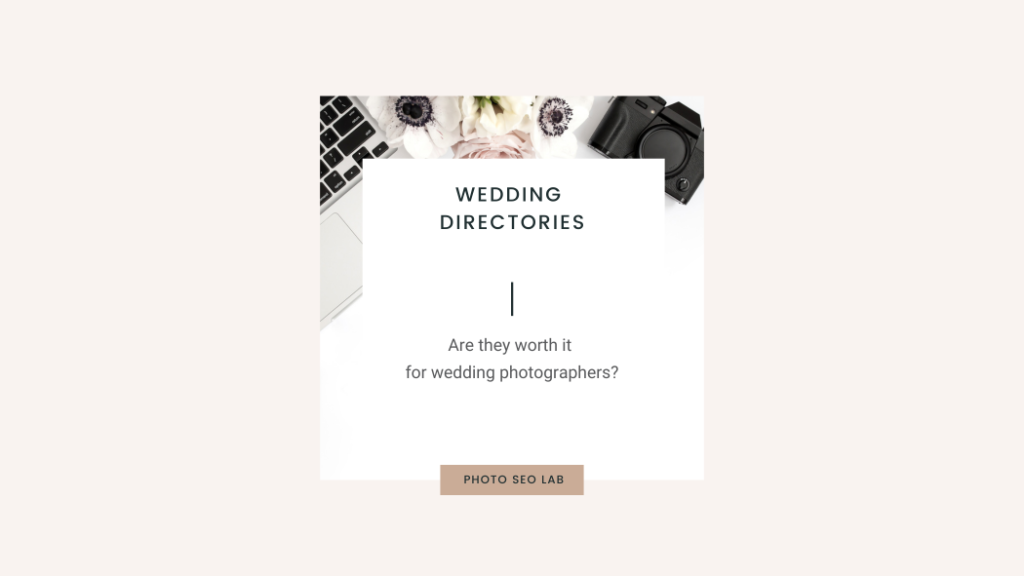What does URL Stand for?
URL stands for ‘Uniform Resource Locator’, and it’s the equivalent of a street address on the web.
URL Website Settings
The URL’s created on your website can be described as ‘permalinks’. These are permanent links to your blog posts and should not be changed unless there is a problem with them.
Whilst WordPress creates these for you automatically, it’s best to edit them to ensure they are as short and succinct as possible and do not contain ‘stop’ words like ‘and’, ‘the’, ‘to’, ‘from’ etc.
It’s important not to stuff these with your main keyword. If you’re blogging about a venue, just mention the venue, not the city unless it’s a big chain hotel like Hilton, or a Tithe Barn in England, as there are approximately 3 million of those.
URL Best Practices for Wedding Photographers
There are simply loads of great articles on the web about SEO friendly URLs, and covering URL best practices, but I find they are not really reflective of the unique challenges we face as wedding photographers who may be shooting at the same venues many times.
With that in mind, I wanted to create an article showing some examples.
Because we may only shoot at a venue once every couple of years, one thing to consider is making URLs of wedding venues we may only occasionally visit evergreen, rather than ‘one-hit wonders’.
Let’s use Eaves Hall as an example wedding venue.
The first wedding you shoot at a new wedding venue can start simply as:
domain.com/eaves-hall-weddings
or
domain.com/eaves-hall-wedding-photography
Note: The version you choose from the above will be influenced by your competitor analysis of the SERPS page.
SEO Friendly URLs Need to be Evergreen
This blog post becomes what I refer to as an acorn post. This is a post that has the potential to become a mighty oak in future, but for now, it’s a simple blog post.
With that in mind, if our URL structure was domain.com/blog/eaves-hall-wedding-photography, then in future, if this was to become a mighty oak (pillar post) and say you wanted to make it a nicely styled page instead of a blog post, you’d need to start with a new URL and redirect domain.com/blog/eaves-hall-wedding-photography to domain.com/eaves-hall-wedding-photography.
In that scenario, by doing a 301 redirect, you’d lose a bit of the power of any backlinks that had been built up on the domain.com/blog/eaves-hall-wedding-photography address and effectively be starting over.
This is why I keep the URLs on my wedding photography blog very simple.
Realistically, I do not know where I will be booked in future or how many times I’ll photograph a wedding at a specific venue, so by avoiding using categories or any hierarchy in my URLs, I can future proof my content, and make my URLs evergreen so that they can be used for bigger things in future.
Are you looking for wedding photography blog post ideas for the pandemic? Head to photography blog post ideas to get 25 apocalypse friendly ideas.
URL FAQs
Yes! According to a recent research study by Backlinko, which looked at over 11 million examples, it was discovered that shorter URLs tend to rank higher. The research found that the average URL length for a top result in Google is 66 characters.
No. It’s best to apply URL best practices to future posts rather than changing any old URLs, unless the old post is underperforming and not generating traffic.
Yes! Do this whilst the post is in draft, before it is published. Remove any unnecessary words like ‘and’, ‘the’, ‘to’, ‘for’ and so on. Never include couple names.
SEO Friendly URL Resources
There’s a ton of great articles on this subject, but I’d encourage you to take the approach I describe to ensure you create URLs that will stand the test of time.



